The temporary nail damage is bad, but the cumulative UV exposure could be worse
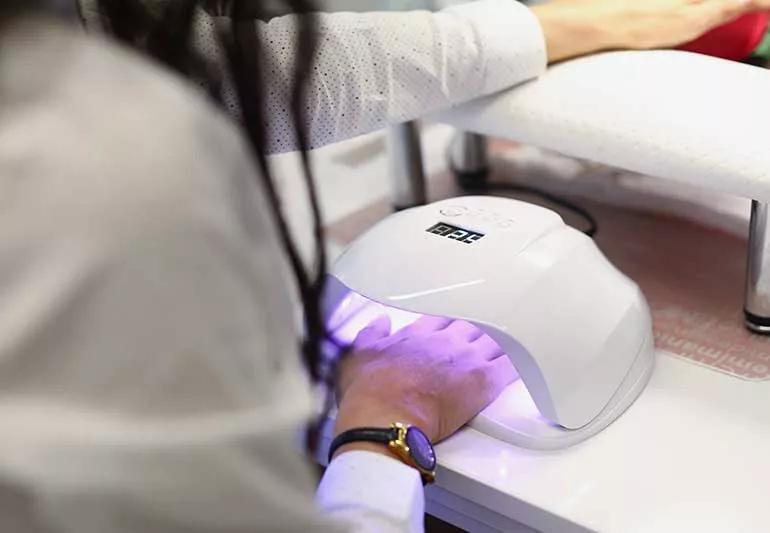
There’s so much to love about gel nail polish. It dries quickly, lasts for weeks and rarely chips. And while it’s on, your nails feel almost indestructible. But we’re guessing you’ve always known, deep down, that curing gel under a lamp couldn’t be the healthiest way to decorate your digits.
Advertisement
Cleveland Clinic is a non-profit academic medical center. Advertising on our site helps support our mission. We do not endorse non-Cleveland Clinic products or services. Policy
It’s time to face facts: If you treasure your talons, you should probably avoid gel nail polish.
We talked to dermatologist Chey Ranasinghe, MD, to learn why that is and what precautions you should take if you’re determined to get ‘gelly’ with it.
The difference between gel polish and standard nail polish, besides formulation, is the application process. The two products usually look identical, but while you simply wait for regular nail polish to dry on its own — a process that can take over half an hour, depending on the brand and type you’re using — gel nail polish cures (quick dries) under a specialized UV (ultraviolet) or LED (light-emitting diode) lamp in 60 to 90 seconds. Once it’s cured, you’ve got yourself a manicure that you can’t smudge or chip the minute you walk out the door. And it should stay put for the next two to three weeks.
Sounds great, right? In some ways, it is. But just because gel polish looks good doesn’t mean it’s good for you.
There are several different issues with gel nail polish. Let’s start with the concern that’s generating the biggest buzz for years now: The elevated risk of skin cancer the curing process poses.
Regardless of the lamp being used, the process of curing a gel manicure involves repeated exposure to ultraviolet A (UVA) rays, which causes skin aging and DNA damage that can lead to cancer. Just like there’s no such thing as a risk-free tanning bed — which also uses UVA light — there’s no such thing as a risk-free nail lamp. So, while you may have read that LED lamps are a safer option, they still emit UV radiation.
Advertisement
That may not seem very worrisome in and of itself, but it’s important to remember how much you use your hands — and how rarely you think to protect them. “We already get regular UV exposure while holding the steering wheel when we drive,” Dr. Ranasinghe notes. “Adding on the cumulative bursts of UV exposure that happen during the curing process of gel manicures increases UV-induced skin damage and risk.”
Dr. Ranasinghe puts it simply: “The less UV exposure you give your hands, the better. Studies right now say the carcinogenic risk is low, but it’s still there!”
Even if the curing process didn’t involve UV exposure, it still wouldn’t be the best option for your nails. There are a lot of chemicals in gel nail polish that can spell all kinds of trouble for your hands. Want to go back to naked nails? Getting there could be a problem, too!
If you’re ready to break up with your curing lamp, there’s good news: There are lots of different alternatives out there. Of course, they all have their own pros and cons, so you’ll have to decide what’s most important to you. Among the options available to you:
Dr. Ranasinghe’s a realist. She knows that sometimes, like before a long trip, a gel manicure might be your best option. Her suggestion: Instead of getting a gel manicure every two to three weeks, do it a few times a year for special occasions. It’s important to give your nails a break.
Here are a few things you can do before and during your gel manicure to make it as safe as possible:
Most nail salons don’t offer sunscreen as part of their gel manicure services, so bring your own and ask that they apply it — or apply it yourself — before the nail-painting process begins.
When it comes to chilling out under curing lamps, you should opt for an SPF 30 or higher mineral sunscreen that contains titanium dioxide and zinc oxide. Mineral sunscreens, also known as physical barrier sunscreens, are much faster-acting than their chemical counterparts. You can also purchase UV-protective fingerless gloves, which expose your nail bed while keeping the rest of your hand protected.
Advertisement
We know, we know, cuticles are rarely cute. But that clear skin at the bottom of your nail serves an important function.
“Your cuticle is your body’s natural barrier to protect your nail from infection — don’t remove it!” Dr. Ranasinghe urges. Whether you’re DIYing it or going to a nail salon, cutting or pushing cuticles is always a no-no.
If anything, you should be giving your cuticles extra care when you have gel polish on. Moisturize your hands and nails and apply cuticle oil every day. That will help keep the nail strong underneath the gel and reduce the risk of your nail peeling when the polish is removed.
If you’ve ever had a gel manicure before, you know that it can be hard to resist the temptation to peel it off — which is one of the worst things you can possibly do to your nails.
Instead, Dr. Ranasinghe says, you should have the gel polish removed by your manicurist.
“If you’re removing gel polish yourself,” Dr. Ranasinghe says, “rough up the surface of the gel with an emery board, soak cotton balls in acetone and apply them directly to the nail bed. Be sure the cotton doesn’t touch the surrounding skin, as that is very drying and irritating. Once the cotton has been positioned, wrap the nails with aluminum foil to keep the cotton balls in place and keep the acetone from evaporating.
Advertisement
“After 10 to 15 minutes, the polish will come off easily and you shouldn’t need to traumatize the nail with a bunch of additional tools.”
If you have to use a tool to finish the job, use an orange stick or plastic cuticle pusher instead of metal tools. And if you have to use metal tools, make sure they’re sterilized.
Your nail is finally nude. Now what?
The answer depends, partially, on the condition of your fingernails. If everything looks good, then just carry on moisturizing and applying cuticle oil.
If you’re noticing issues with your nail — like splitting, dryness, white spots or thinning — it’s time to give them some extra TLC. Cut your claws down and keep the moisturizer and cuticle oil coming. You can’t make a nail thicker or fix damage that’s already done, but you can create a more hospitable environment for new growth.
Gel isn’t the healthiest option you have when it comes to nail cosmetics. Dermatologists worry about the UV exposure from the curing lamps — not to mention the tendency of manicurists and DIYers alike to damage the nail during the gel-removal process. There are lots of fast-drying, long-lasting polish options out there that are safer for both your skin and your nails.
Advertisement
If you really gel with gel, make sure to apply sunscreen to your hands before going under the lamp, leave your cuticles alone and moisturize extensively afterward. And when it’s time for your nails to get naked, see a professional or follow proper polish-removal procedure. No picking!
Learn more about our editorial process.
Advertisement

Color, texture or shape changes may signal a larger medical issue
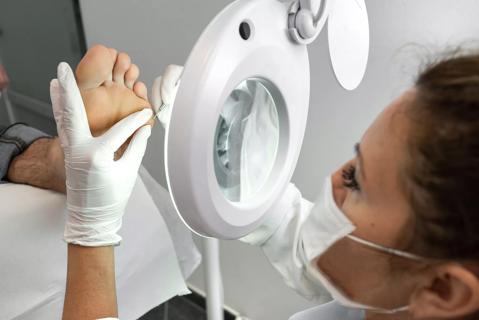
Safety, hygiene and technician training are among the biggest benefits of a ‘medi pedi’

These manicure techniques vary in terms of longevity, hygiene and overall nail health
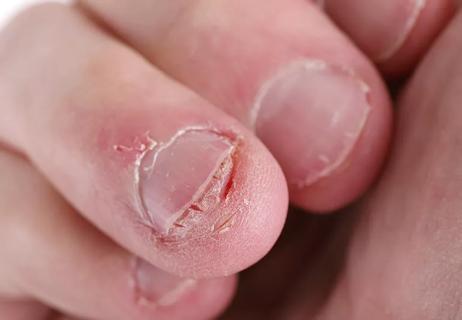
A combination of treatments can help you conquer the compulsion

Animal safety and bacterial infections are concerns
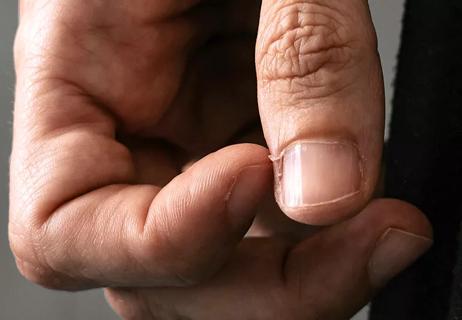
Resist the urge to bite, tear or rip off those little pieces of skin
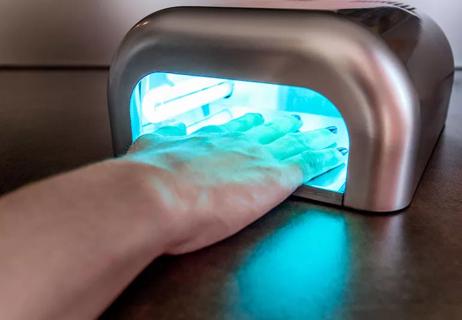
Frequent manicures, high-watt bulbs increase potential

Give your nails a chance to breathe, stay healthy

The best parenting style balances enforcing rules and showing plenty of love

Tips include cutting back on sugar, focusing on exercise and managing stress

It can be harder to let go when you’ve invested time, energy and emotions — but it might be the healthier choice long term